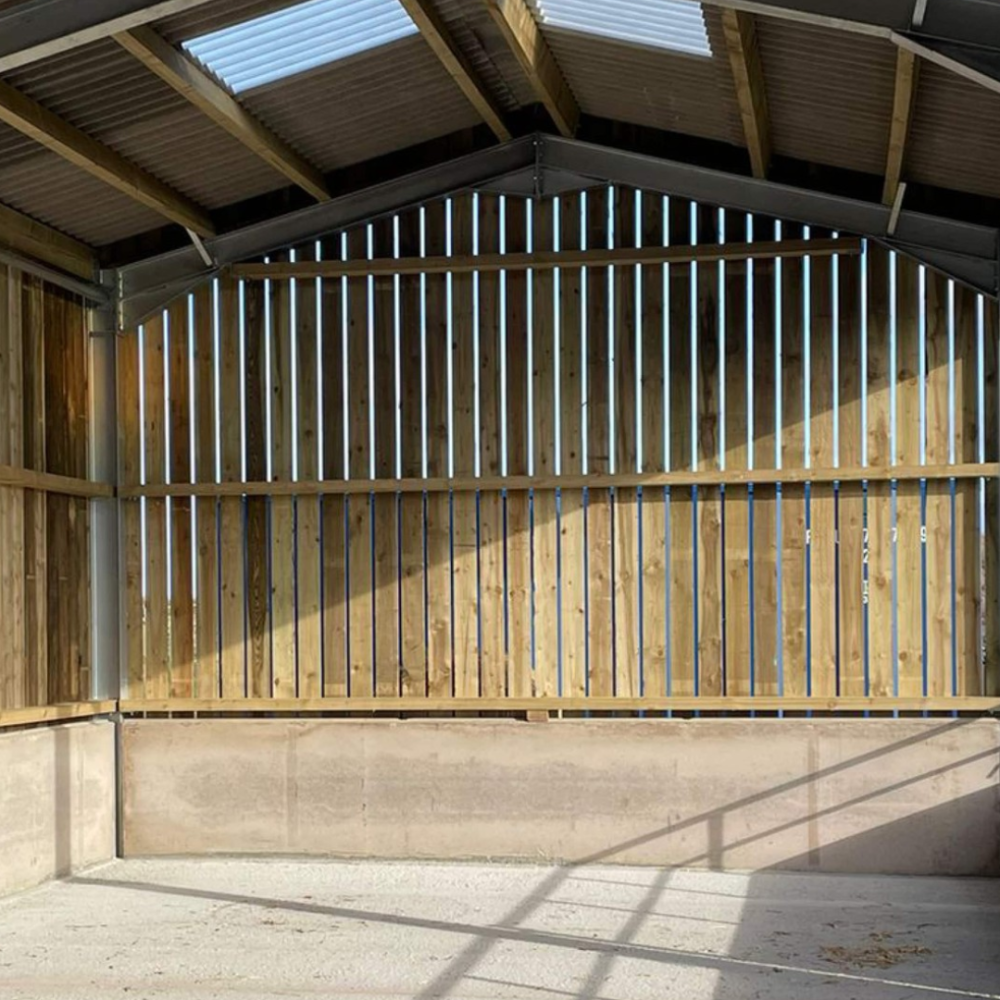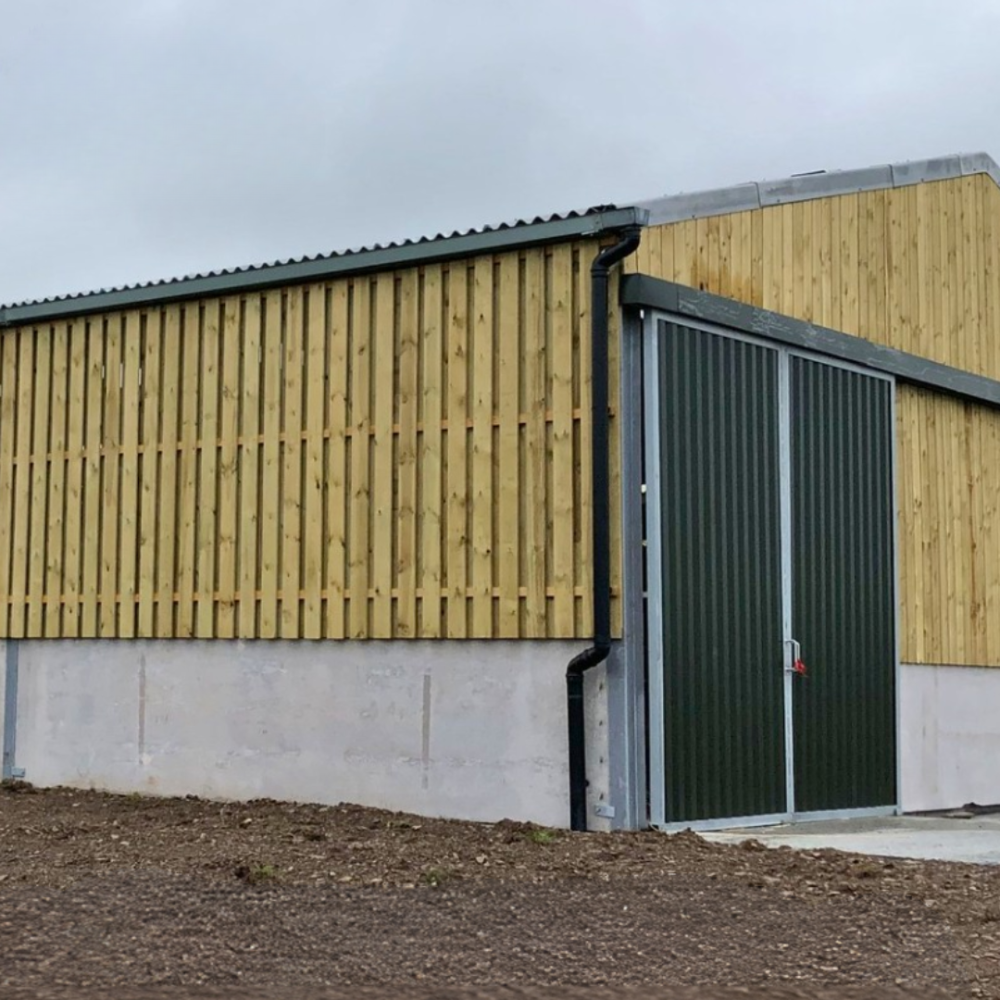If you’ve ever walked past a traditional farm building and noticed neat vertical timber slats with small gaps between them, chances are you were looking at Yorkshire boarding.
It’s a straightforward cladding style that has stood the test of time, and for good reason.
What sets Yorkshire boarding apart?
Yorkshire boarding is all about ventilation and practicality.
Instead of overlapping like castle boarding, the boards are fixed vertically with equal gaps between each one.
This simple design allows fresh air to move freely through the building while still giving a good level of shelter from the elements.
The result? A structure that’s naturally ventilated, reduces moisture build-up, and helps keep the internal environment healthier and more comfortable.

Why choose it?
- Natural airflow – the gaps keep air circulating, reducing condensation.
- Healthier livestock – good ventilation means less stuffiness and a better environment for animals.
- Moisture control – especially useful for hay, straw, or feed storage where damp can be a problem.
- Traditional look – neat vertical lines give an agricultural building a timeless, functional appearance.
Where Yorkshire boarding works best
Because it balances shelter with airflow, Yorkshire boarding is especially suited to:
- Livestock housing – keeping cattle, sheep, or horses comfortable all year round.
- Hay and straw storage – minimising the risk of mould and spoilage.
- General purpose barns – where you need weather protection without creating a sealed space.
- Machinery sheds – ventilation helps prevent condensation on equipment.

A classic choice that lasts
Yorkshire boarding has long been a go-to option on farms across the UK.
It’s tough, low-fuss, and blends naturally with its surroundings as the timber weathers over time.
Whether you’re building new or upgrading an existing structure, it’s a cladding style that delivers both function and a classic rural look.
Want to learn more? Let’s chat!
Get in touch or request your FREE quote below
Back to all News
